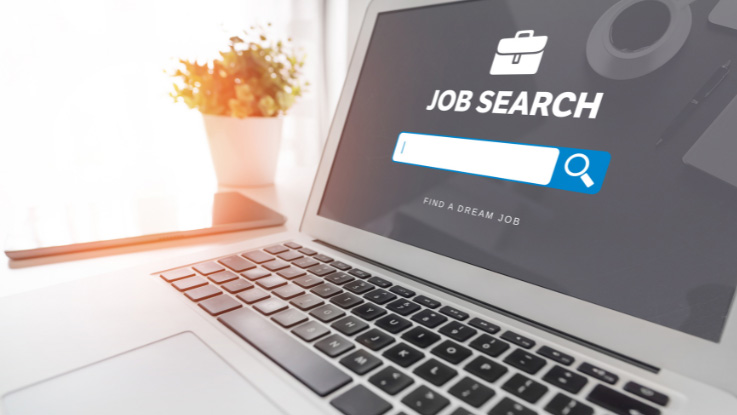How to ace your job interview
Key takeaways
- Prepare by researching the job and company to show your interest.
- Use mock interviews to practice answering questions.
- Wear neat clothes to look professional and show you’re serious about the job.

Getting ready for a job interview can be a bit scary, but don't worry!
Here are some simple tips to help you shine and get the job you want.
Prepare ahead
- Know the job: Read the job ad carefully. Understand what the employer is looking for.
- Research: Learn about the company. What do they make or do? Have a look at the company website for information about their priorities and values. Knowing this helps you answer questions better and shows you're interested.
Practice
- Mock interviews: Practice with a friend or family member. Use a job ad to create questions and Google “Most commonly asked interview questions”
- STAR method: Use this method to answer questions. STAR stands for:
- Situation: Describe a situation you were in.
- Task: Explain the task you had to complete.
- Action: Describe the actions you took.
- Result: Share the results of your actions.
For example:
- Situation: “In my part-time job at a café, we had a sudden rush of customers.”
- Task: “I needed to ensure all customers were served quickly and efficiently.”
- Action: “I organised my team, delegated tasks, and helped out wherever needed.”
- Result: “We managed to serve everyone promptly, and customer feedback was very positive.”
Types of job interviews
- Face-to-face: The most common type. You meet the interviewer in person.
- Phone: Often used for initial screenings. Make sure you're in a quiet place.
- Video: Becoming more popular. Test your technology beforehand and find a good spot with minimal distractions. Make sure to blur the background or add a video effect so that employers cannot see your actual background, which may be distracting.
- Chatbot: If you’re applying for a job with a large retail or hospitality chain,, there’s a high chance that AI will be used to screen your application. You might be asked to have interactive, real-time conversations with a chatbot, who asks questions and analyses the answers you’ve written in response. If you ‘pass’ these interviews, you might immediately be sent some questions by the chatbot and asked to send a video recording of your responses to these questions.
Tips for chatbot interviews
Sometimes your responses to questions will be timed by AI, which records how long you took to respond. Keep this in mind when you’re answering.If you are applying to a lot of retail or hospitality chains you’ll notice that they all use the same chatbot interview questions. If you are happy with the chatbot responses you’ve given, save them to a document, and cut and paste them into future chatbot interviews.
Make sure that your answers include correct spelling and grammar.
Use the keywords in the job description in your answers.
How to prepare for a video interview
- An AI recruiter is looking for the same things as a human interviewer – soft skills, facial expressions, your body language, whether you seem confident, capable, warm, someone who is able to carry on a conversation
- Wear clothes that you would wear to a interview, think about the background, matching your facial expressions to the points you’re making.
- The words you use and how well those words map to keywords in a job ad. Use the keywords – as you prepare answers, make sure that keywords are in the responses you’re giving.
- Practice speaking clearly, so that your thoughts can be accurately processed by AI.
- Record yourself! Practice speaking to camera solo – this is the best way to get comfortable with timed responses.
- Look into the camera lens, not at yourself. Eye contact matters, even with a bot. Looking directly into the camera lens creates stronger eye contact for AI scoring for engagement and focus.
- AI can’t read your mind, but it can assess your tone. Speak clearly and with confidence; if you speak in a ‘flat’ tone, you could be scored lower.
- Structure your answers clearly. You can use methods like STAR (Situation, Task, Action, Result) to clearly show how you made an impact.
- Research the company and use the language from the job ad, as AI scans for keywords to check suitability for the job.
- Don’t forget to include examples of your soft skills. While you might be talking to a blank screen, having human examples where you’ve been a great team player, adapted well under stress or solved a tricky situation with good communication is just as valuable as technical know-how.
These AI-driven processes deal with thousands of applications for some of the largest employers. If you have no luck with the chatbot/video interview process, perhaps try contacting smaller employers directly, by email, phone, or visiting the workplace, telling them of your interest and availability for available jobs and providing your CV.
Dress for success
- Look professional: Wear clean, neat clothes. It shows you are serious about the job.
During the interview
- Be on time: Arrive a little early. It shows you are punctual.
- Stay calm: Take deep breaths if you feel nervous. It’s okay to pause and think before you answer.
- Be honest: If you don’t know something, it’s better to say so than to guess.
After the interview
- Thank you note: Send a thank you email. It shows you appreciate the opportunity.
Remember, practice and preparation are key. Good luck with your interviews and go get that job!
End of article



